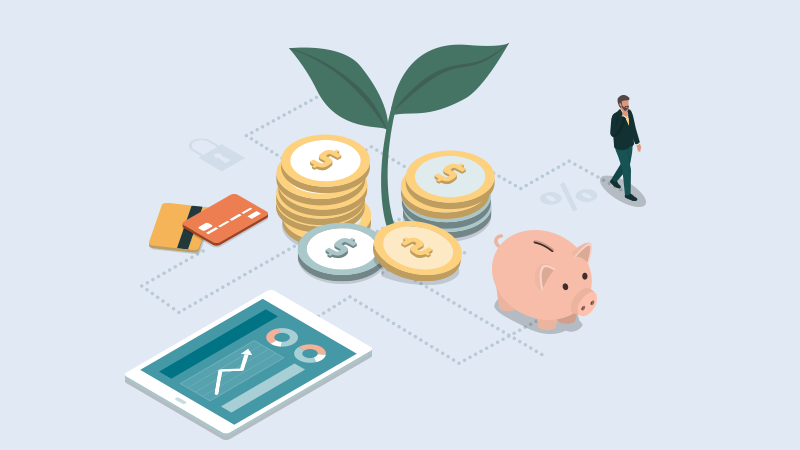The fundamental role of a Procurement Department is to make sure that the company they work for continue to receive the necessary goods and services that allow their employees to operate efficiently and profitably. Of course, their underlying, and some might say actual role is to reduce the cost of those goods and service, while maintaining the same quality and service levels that they are currently enjoying. Even the most proficient and experienced procurement professionals struggle with this, and in today’s volatile market it may seem nearly impossible to realize savings. One way that procurement teams are starting to look at more intently as inflation, supply chain, and labor costs are rising is Cost Avoidance and how that can be measured as a line item within your overall Cost Savings metrics.

What is Cost Savings?
This is the most basic and traditional measurements of a procurement teams efficacy. Are we spending less on the same goods and services that we purchased last year? The equation is not as straightforward as A – B = SAVINGS, but it’s not too much of a stretch beyond that. Let’s use the commodity space as a our example set. If you bought Widget 1 last year for $X last year and renegotiated that price to $Y, then they difference between $X and $Y would yield the per unit cost delta ($Z). If you negotiated well, which with proper leverage and a strong negotiators backbone I am sure you did, that delta is at a Savings to your company. We would then multiply that Savings by the number of times it was purchased in the given period, and we would know that if Widget 1 was purchase 30 times at the new $Y rate, then your company would be saving 30 x $Z in total dollars on those purchases.
(Full Equation: $X - $Y = $Z “Unit Savings”; 30 x $Z = “Extended Savings” on Widget 1)
Repeat that calculation on every single purchase made across all of your commodities from all of your suppliers and you will have a strong indicator of how much you were able to save on a per good basis (we will save assessorial, freight, and other fees for a different post!).
However, what do you do when the only direction price is going is up!? We speak with procurement professionals, suppliers, and consultants on a daily basis and the conversation is all variations on the same – prices are going up and the focus is when are those increases realized and how much of those increases are realized, as compared to the market. The question is how well are you positioned to avoid the costs?
What is Cost Avoidance?
Cost avoidance, strictly speaking, is any proactive action taken to mitigate a future cost increase or expense waged. Let’s take one extremely large example… over the past two years: Travel. Most procurement departments probably did not submit this internally, but for the past 2 years companies have been avoiding travel costs for the far more important and significant reason of keeping their employees safe. For some that resulted in millions of dollars in cost avoidance – a Cost Savings to the company. Why is this important? It is important because every dollar saved in procurement is 100% realized by the company.
A more real example is looking back at Widget 1, when over the past year the cost went from $X to $W due to inflationary increases and then to $U because of supply chain costs and then to $V because of manufacturer cost increases, and now you are negotiating an supplier planned increase to $T and wondering when the pain will stop. If you had strong contract terms, a proactive approach to contract management, and a strong supplier relationship, then maybe you are realizing a little less pain than your peers. If you have good price locks, then maybe you can delay an increase by a month or two. Manufacturer documented price adjustment requirements may avoid certain supplier-based increases. Proactive contract price management then maybe you can offset your increases by reducing costs in other areas of your spending. Each of these is a measure of Cost Avoidance that does not typically get calculated at the quarterly budget reviews.
They are elusive and time consuming to document. However, in a market where everything seems to be going up, if you can determine that over a 6-month period your company only took a 5% increase, due to price holds and rate caps, whereas the market took an 8% increase, then you should be confident in reporting a 3% savings to your management team.
CenterPoint Group’s leveraged programs are still generating cost savings due to our heavily discounted pricing and robust analytics team that are constantly evaluating and renegotiating our pricing. However, we are finding Cost Avoidance is still becoming one of the most important metrics that we are calculating for our Members. It is an important savings metric and one that makes our procurement professionals, our friends, look like heroes.
CenterPoint Group provides savings solutions in key procurement categories, such as Office Supplies, MRO and Safety, Corporate Travel, Wireless Telecommunication, Shipping and Small Parcel, Contingent Labor, Environmental services and more. Here are a few of our preferred suppliers:




Leave a Reply
Comment policy: We love comments and appreciate the time that readers spend to share ideas and give feedback. However, all comments are manually moderated and those deemed to be spam or solely promotional will be deleted.